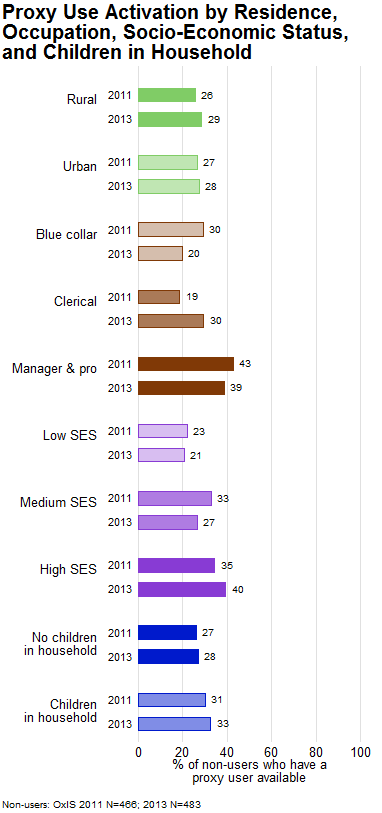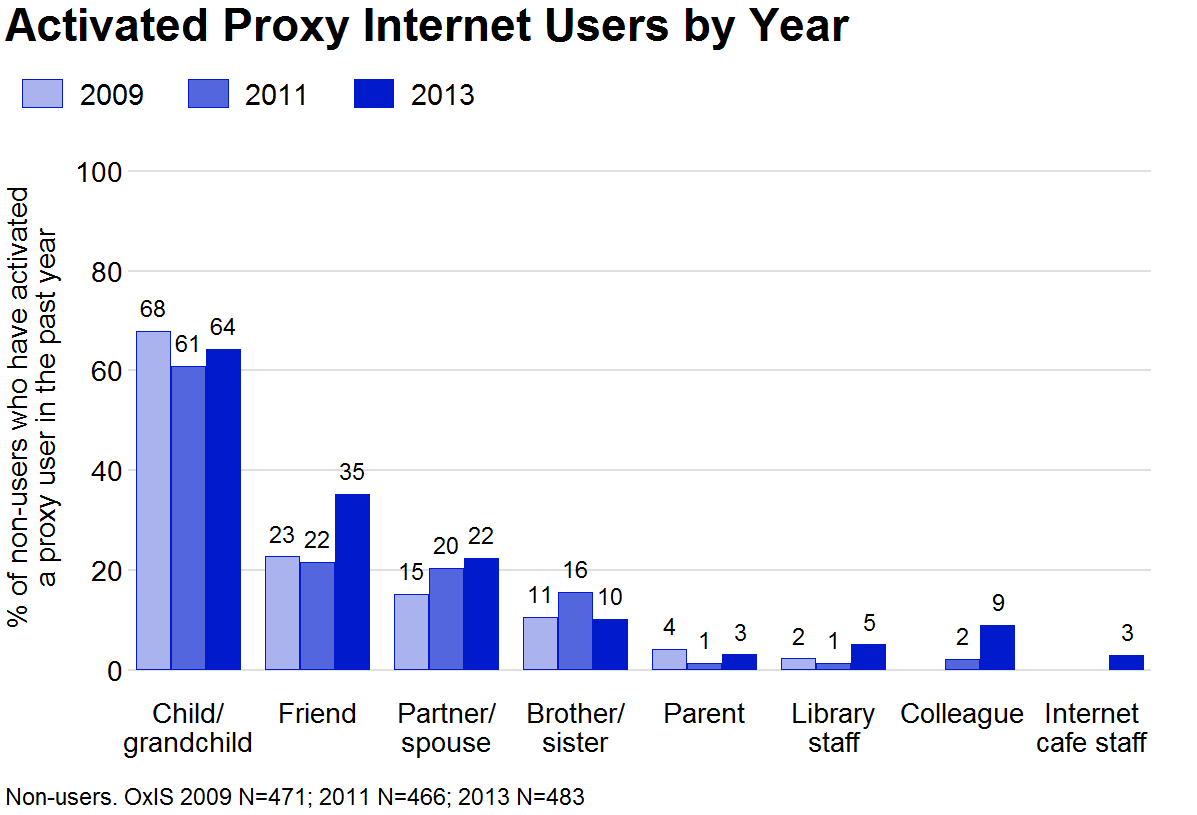In general, OxIS distinguishes between Internet users and non-users based on personal use of the Internet. Internet non-users are individuals who say they do not use the Internet personally, by themselves. However, many of these individuals in fact have some indirect access to the Internet, via so-called proxy Internet users. Proxy Internet users are individuals who (for example) go online to send an e-mail, or find information on someone else’s behalf. OxIS differentiates between two levels of proxy Internet access. First, we ask non-users whether they have a proxy user available, and then, whether they have activated a potential proxy Internet user in the past year. Below, I review the characteristics of Internet non-users who engage in indirect Internet use.
Since 2005 there has not been much change in the proportions of non-users who have a proxy user available to them (‘proxy use available’ line in the graph below), as well as in the proportions of non-users who have engaged in proxy Internet use (‘proxy use activated’ line). About 70% of non-users report having access to proxy Internet use, whereas only about 20% of non-users have actually activated a proxy user. The stability in proxy use availability and activation is interesting, since from 2005 to 2013, the proportion of non-users declined from 32% to 18% of the British population. Thus, we would expect that a larger proportion of current Internet non-users would have a potential proxy user available to them.
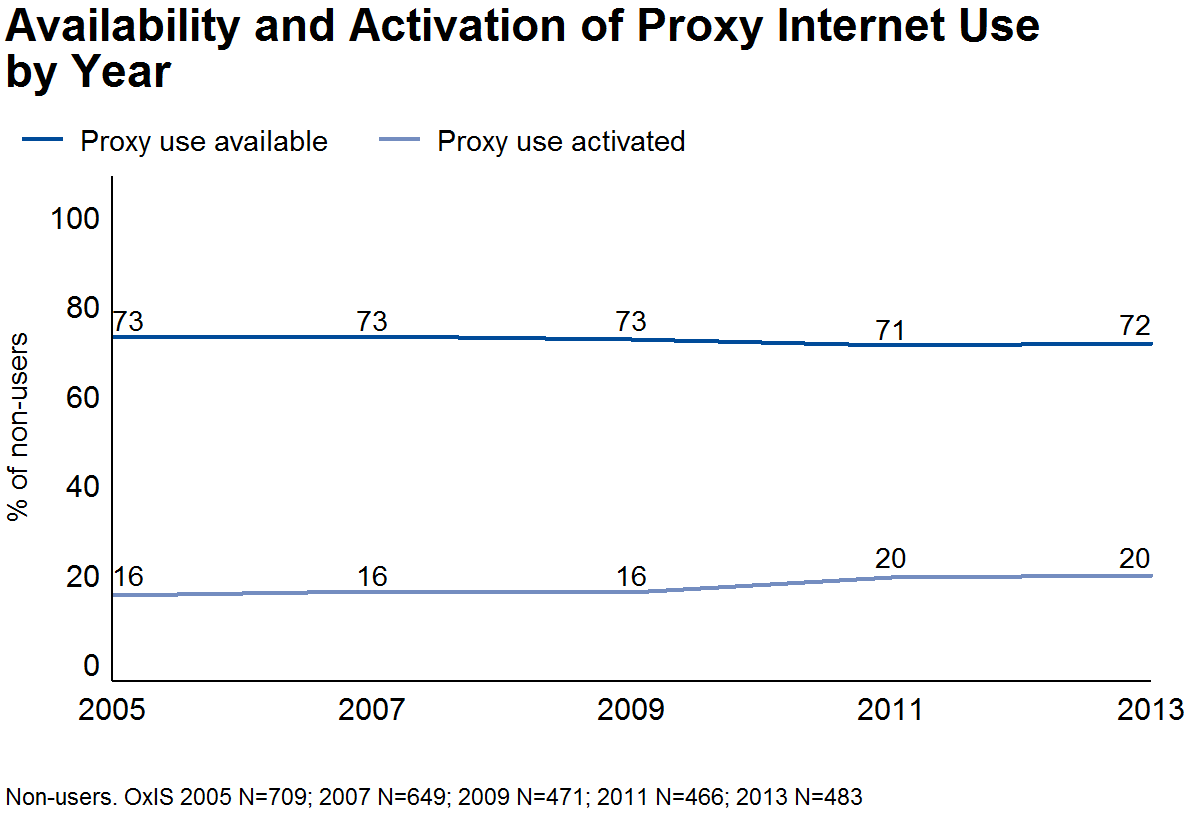
Use of the Internet by proxy has been increasing slightly.
The graphs below do not show a clear picture of the role of individuals’ demographic characteristics in activation of proxy Internet use. Gender does not seem to be important, as about 30% of both men and women report indirect Internet use. Similarly, employment status does not have a clear relationship with proxy Internet use. Interestingly, in 2013 unemployed non-users were most likely to activate proxy Internet use. By contrast, some level of education and high income increase the likelihood of proxy use activation.
Age is an important factor of proxy Internet use activation. While in 2009, middle-aged non-users were somewhat more likely to engage in proxy Internet use, in 2013 the relationship clearly reversed. Over half of non-users aged 25 to 44 activated a proxy user, whereas this proportion drops to 20-30% for non-users aged 45 years or more. There are much bigger differences between 2009 and 2013 in younger age groups than in older age groups. This instability is related to a fewer number of non-users in younger age groups.
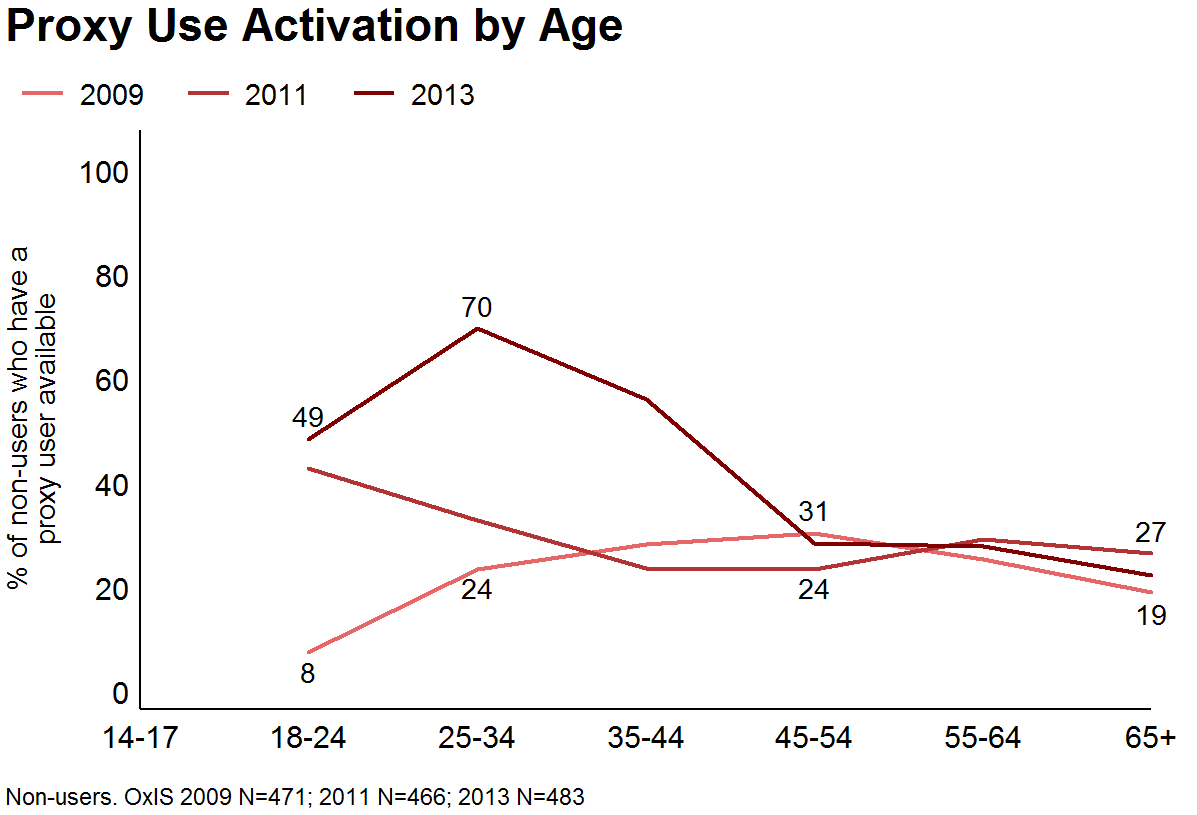
Young people are the most likely to be proxy Internet users in 2013.
The graphs below do not show a clear picture of the role of individuals’ demographic characteristics in activation of proxy Internet use. Gender does not seem to be important, as about 30% of both men and women report indirect Internet use. Similarly, employment status does not have a clear relationship with proxy Internet use. Interestingly, in 2013 unemployed non-users were most likely to activate proxy Internet use. By contrast, some level of education and high income increase the likelihood of proxy use activation.
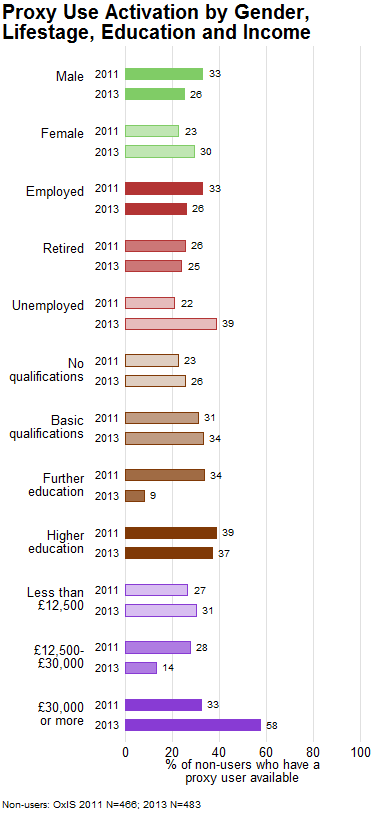
People with higher education and higher income are more likely to be proxy Internet users.
There is also no difference between urban and rural non-users; a bit less than 30% of both groups report indirect use of the Internet. However, the graph below provides evidence that non-users from a higher social class are more likely to have indirect access to the internet; non-users who have high socio-economic status and work in manager and professional occupations are more likely to report proxy use activation. Interestingly, presence of children in the household does not seem to be important for explaining proxy internet use activation, although the last graph shows that children often act as proxy internet users.
Most commonly, proxy Internet access is gained via family members and friends. This pattern has not changed since 2009 when we first asked non-users about specific groups of people that help them with indirect Internet use. Children and grandchildren are the most common sources of proxy Internet use, with over 60% of non-users reporting their help. This is followed by friends, partners or spouses, and siblings. Internet non-users tend not to seek proxy Internet users in libraries or Internet cafes.
Finally, it is also important to understand the characteristics of Internet users who report helping others to use the Internet; these individuals may also be more likely to act as proxy Internet users for people who do not go online themselves.
In 2013, 41% of Internet users reported helping someone else use the Internet in the past year. Those Internet users are more likely to be young; over 50% of users aged 14 to 34 years have helped others use the Internet. Moreover, they are more likely to be students, to have higher education, and high income levels.
The ways in which Internet non-users engage in indirect internet use is an under-researched area of digital divide studies. This overview suggests that socio-economic characteristics are not only important determinants of who are internet users and non-users, but that they also determine indirect access to online services. Finally, the gap between non-users who report they have a proxy user available (about 70%) and those who actually use the internet via a proxy (about 20%) is huge. Further research is needed to explore the reasons why only one in five internet non-users engage in indirect internet use.

